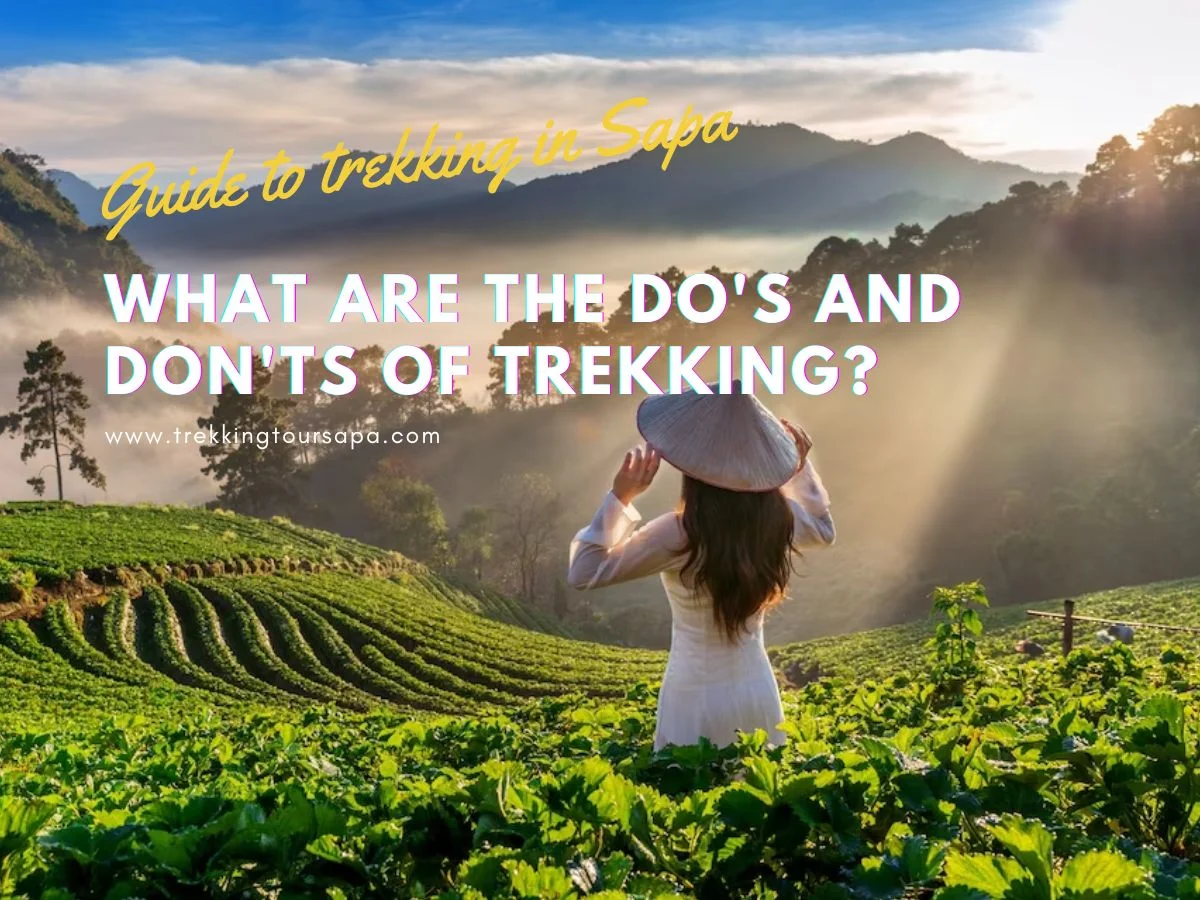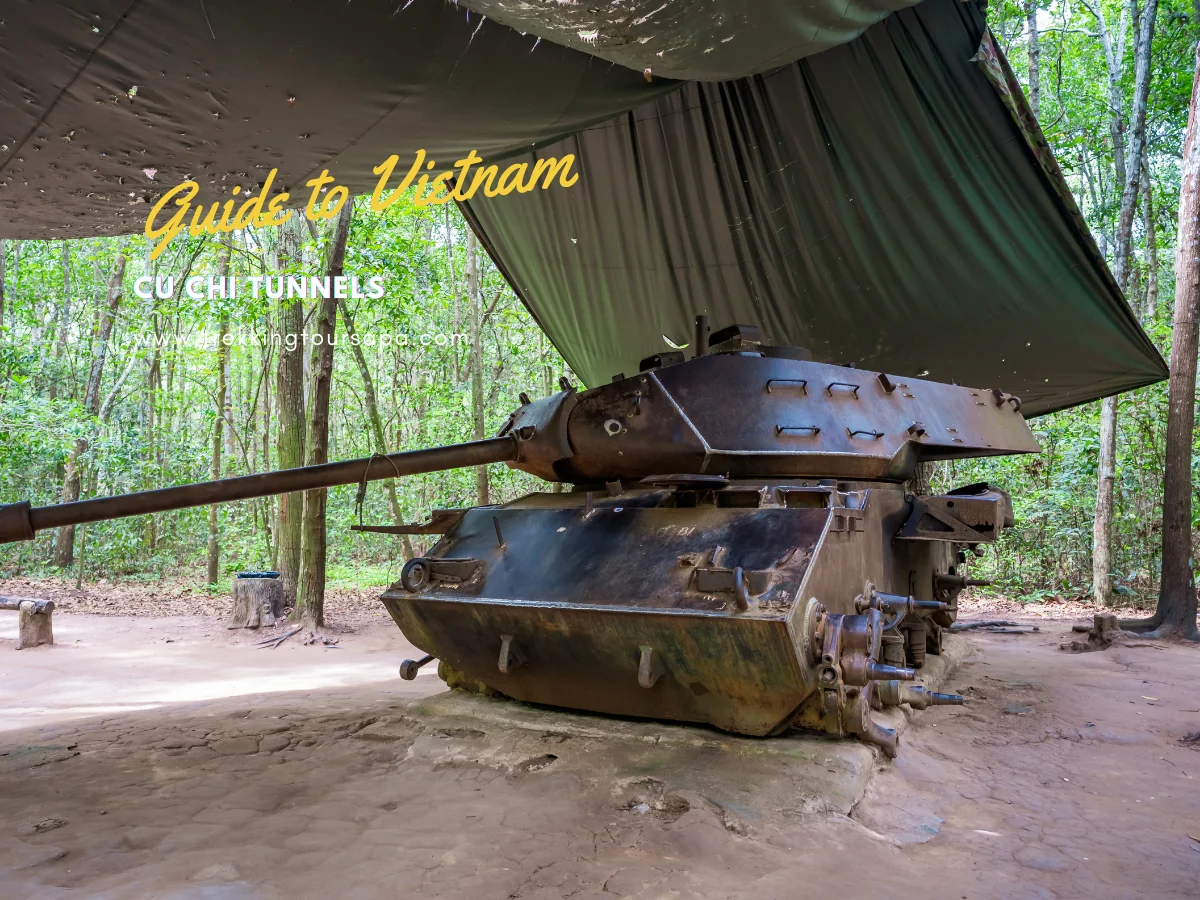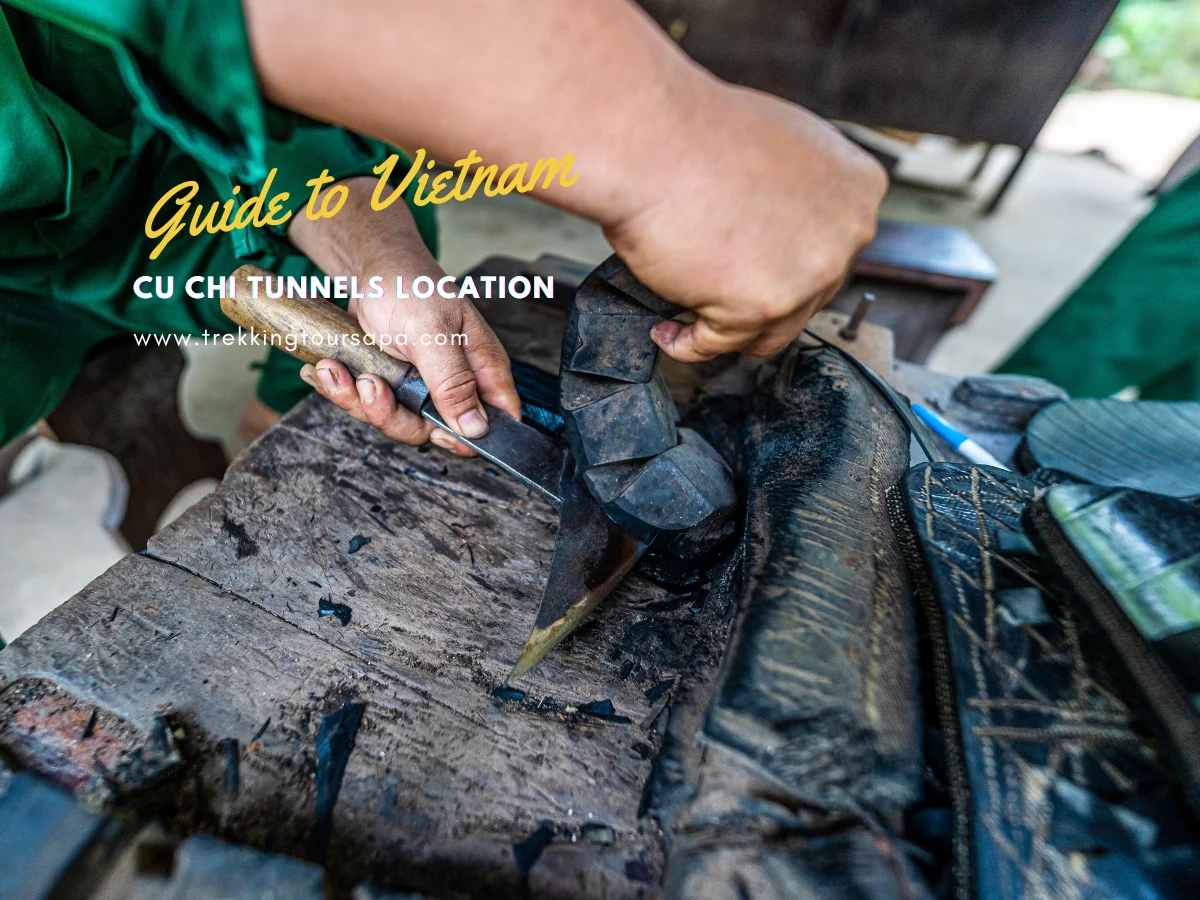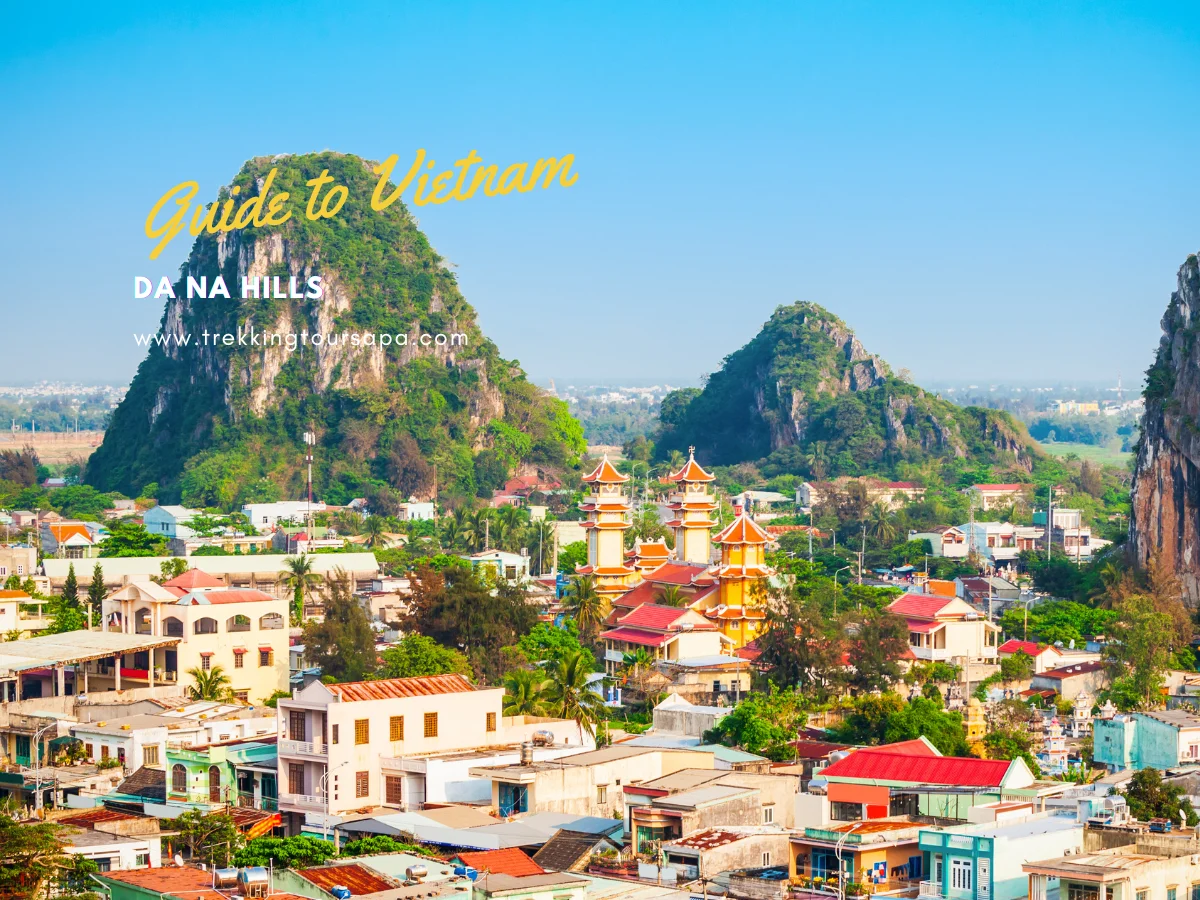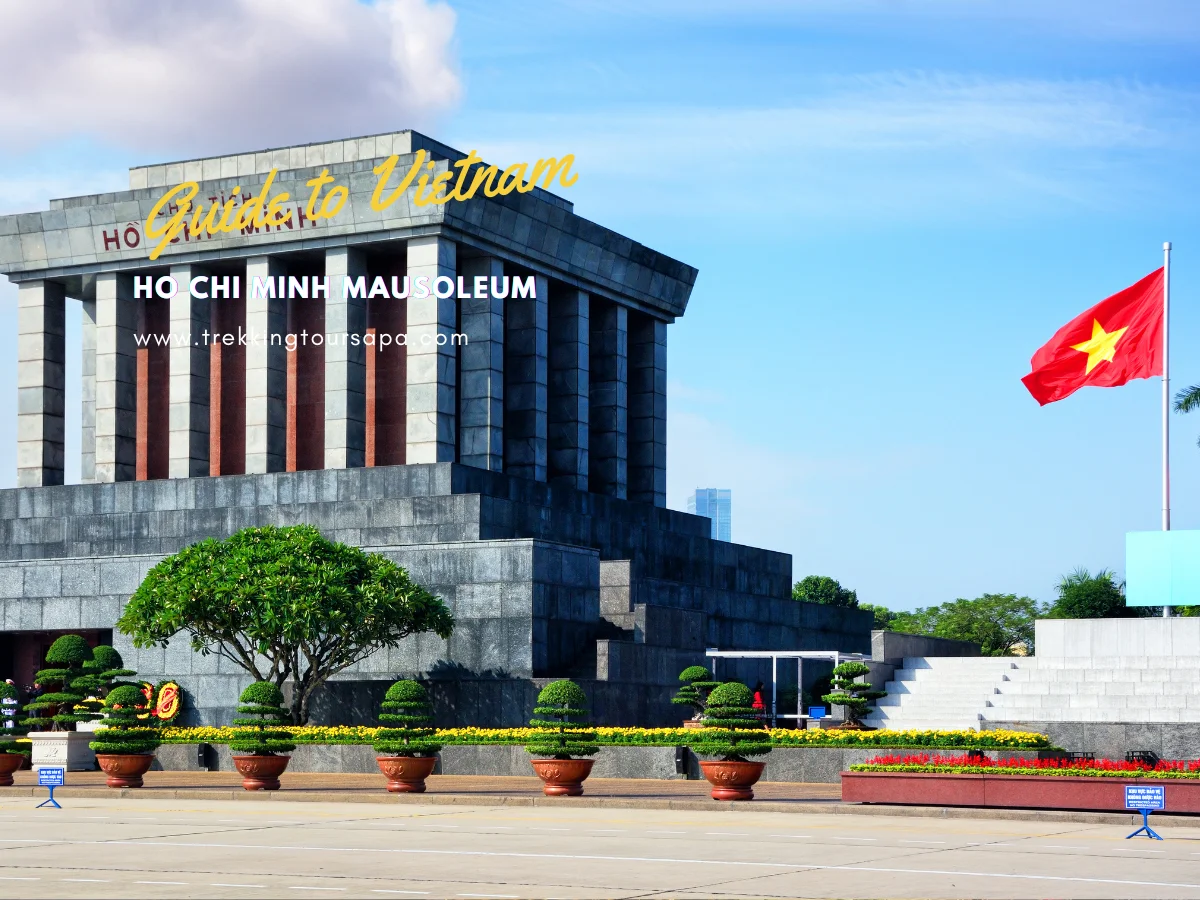If you’ve ever thought about taking up trekking as a hobby, then this article is for you! Trekking can be an incredibly rewarding experience – from the breathtaking views to the fresh air and challenging terrain. But what are the do’s and don’ts of trekking? As an expert in the field of adventure sports, I want to share some key tips so that your next trek will be safe and enjoyable.
No matter if you’re a beginner who’s just starting or an experienced hiker looking for new trails, these simple rules should help set you on the right path. Safety should always be your top priority when exploring nature – but also remember to have fun while doing so! So let’s get started by discussing what specific steps need to be taken to ensure a smooth journey.
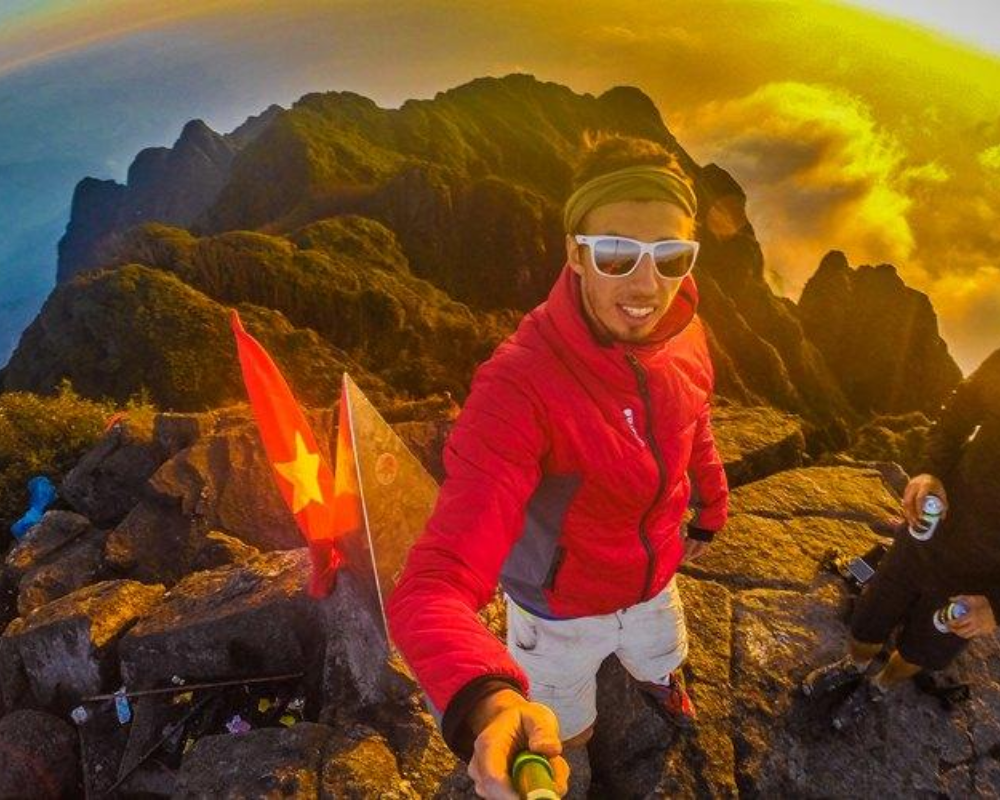
From packing strategies to navigation techniques, I’ll cover all of the basics here so that you can make sure your time spent outdoors is memorable in only positive ways! Now more than ever is a great time to start planning your next epic trek–so read on for essential dos and don’ts before heading into unknown territory!
Preparations And Benefits Of Hiking And Trekking
Have you ever dreamed of trekking through beautiful landscapes, witnessing stunning views, and discovering hidden gems? Whether it’s a short hike or a long expedition, proper preparation is essential for having an enjoyable experience. To get the most out of your adventure, here are some do’s and don’ts to keep in mind when planning your next trek.
First things first, make sure to draw up a comprehensive packing checklist to ensure all your necessary items are included – from food and water supplies to navigation tools like maps and compasses. It’s important that you also factor in any weather-related needs such as waterproof jackets or sun protection hats. Additionally, if you plan on taking photos along the way, consider buying lightweight camera equipment that won’t slow you down.
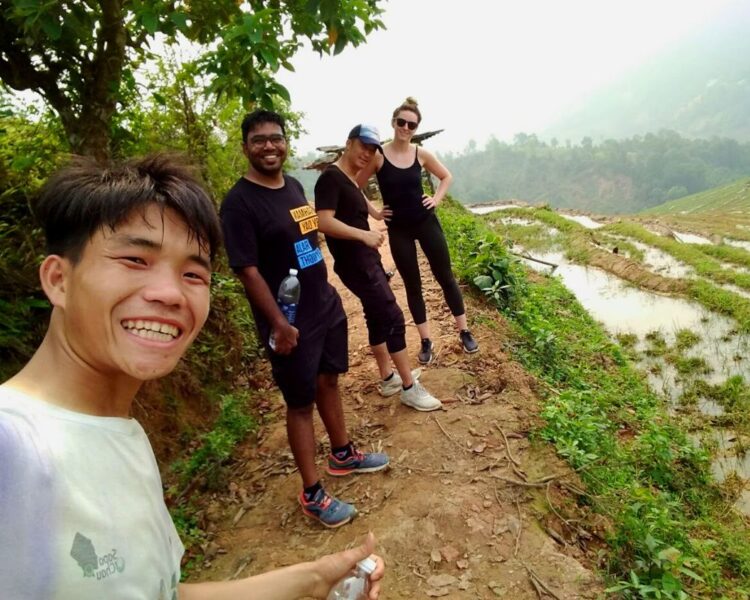
On top of this, it pays off to invest time in physical conditioning before setting off on your journey. Make sure your body can handle the demands of being outdoors by training regularly with hikes and other activities related to trekking. This will help prevent injuries during the trip while allowing you to enjoy each moment without feeling exhausted too quickly. Finally, be sure to have a clear route plan mapped out with set goals for each day plus enough budgeting room for unexpected occurrences along the way. With these steps taken care of before departure, you’ll feel more confident about tackling whatever obstacles come your way!
Clothing And Footwear
Do you want to go trekking but don’t know what clothes and footwear to wear? Don’t worry, I’m here to help! Before you embark on a hike or trek, you must be prepared with the right clothing and shoes. First of all, make sure your clothes are comfortable and made from breathable materials like cotton. It’s also best if they’re lightweight so as not to weigh you down during your journey. Additionally, pack a waterproof jacket in case the weather changes unexpectedly. Layering is key; think of thermal layers for cold days and lighter items such as T-shirts for warmer ones. Sun protection should also be taken into account – bring along a hat, sunglasses, and sunscreen lotion. When it comes to footwear, invest in quality hiking shoes that will provide plenty of grips when walking over slippery terrain. Make sure they fit well and have been broken in before you leave home too! Finally, never forget about comfort: choose the right gear that supports your body while keeping out the elements – this will ensure an enjoyable experience throughout your trekking adventure!
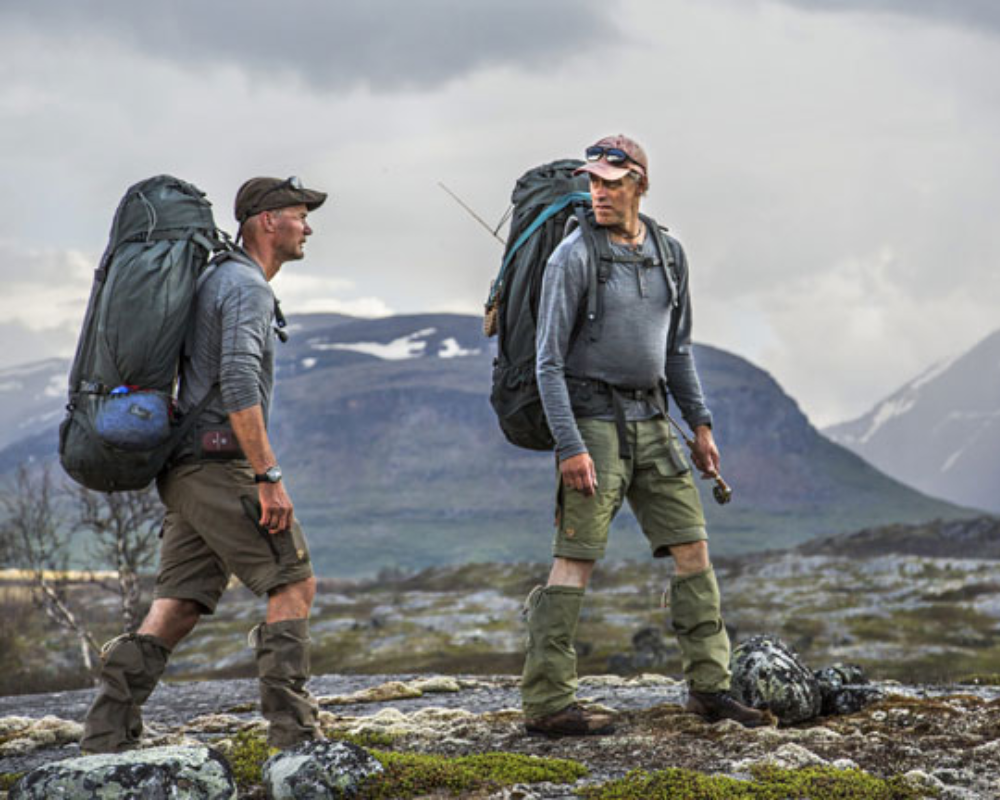
Food And Water
When it comes to trekking, the food and water you bring with you are just as important as the clothing and footwear you wear. It is essential to pay attention to your diet for you to stay hydrated and energized during your journey. Here are some of the dos and donts when it comes to food and water:
Do’s
- Store food properly – This includes keeping all perishables cool or dry if possible, away from animals that may be attracted by any scents.
- Purify all water sources – Boiling or using a chemical purification system such as iodine tablets can make sure your drinking water is safe.
- Pack light but nutrient-rich snacks – Bring foods like nuts, seeds, dried fruit, protein/energy bars, etc., which will provide necessary energy while not taking up too much space in your backpack.
- Use hydration strategies – Make sure you drink enough fluids throughout the day so dehydration doesn’t catch up with you.
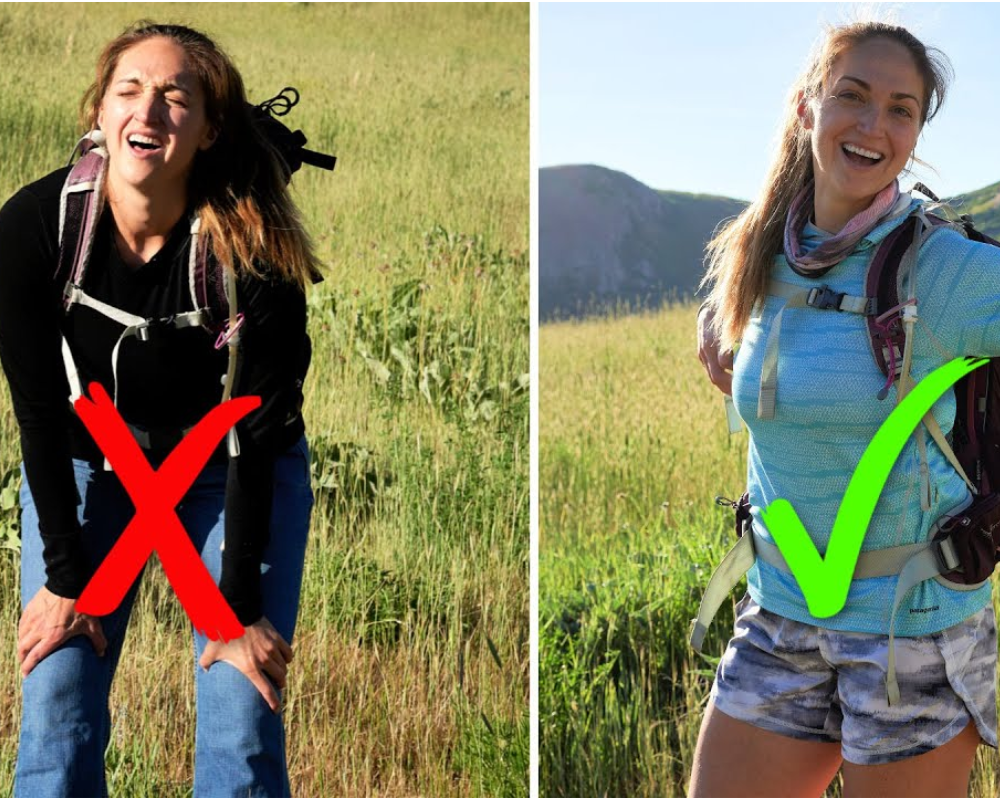
Don’ts
- Don’t forget about proper nutrition – Eating sugary treats may give an initial burst of energy but eventually leave you feeling sluggish. Focus on eating healthy proteins and carbs instead (think trail mix).
- Don’t underestimate how much weight carrying extra water adds – You should pack what will last through most days of hiking without needing more than one refill per day.
- Don’t rely solely on pre-packaged meals – While they make for easy preparation before setting out, these tend to be heavier than homemade alternatives; try making DIY options such as dehydrated vegetables or fruits instead.
With this knowledge under your belt, the next step is to ensure that you and everyone else on your trek have all of the safety equipment needed for a successful journey!
Safety Equipment
Preparing for a trek is paramount and packing the right safety equipment can be the difference between an enjoyable experience and a disastrous one. Prepping with precautionary items like a waterproof jacket, sturdy trekking poles, headlamp, first aid kit, and bug repellent are essential components to your journey.
A quality waterproof jacket will keep you dry while walking through wet terrain and help maintain body temperature in cooler temperatures. Trekking poles should be considered as they provide balance when navigating uneven trails and reduce stress on knees and ankles during descents. A good headlamp is invaluable if caught out after dark and in low-light conditions. Having a well-stocked first aid kit at hand provides peace of mind that any minor medical emergencies can be taken care of quickly and easily. Lastly, don’t forget to bring along some insect repellent; nothing ruins a hike faster than getting eaten alive by bugs!
With all these things packed, it’s time to turn our attention to weather conditions…
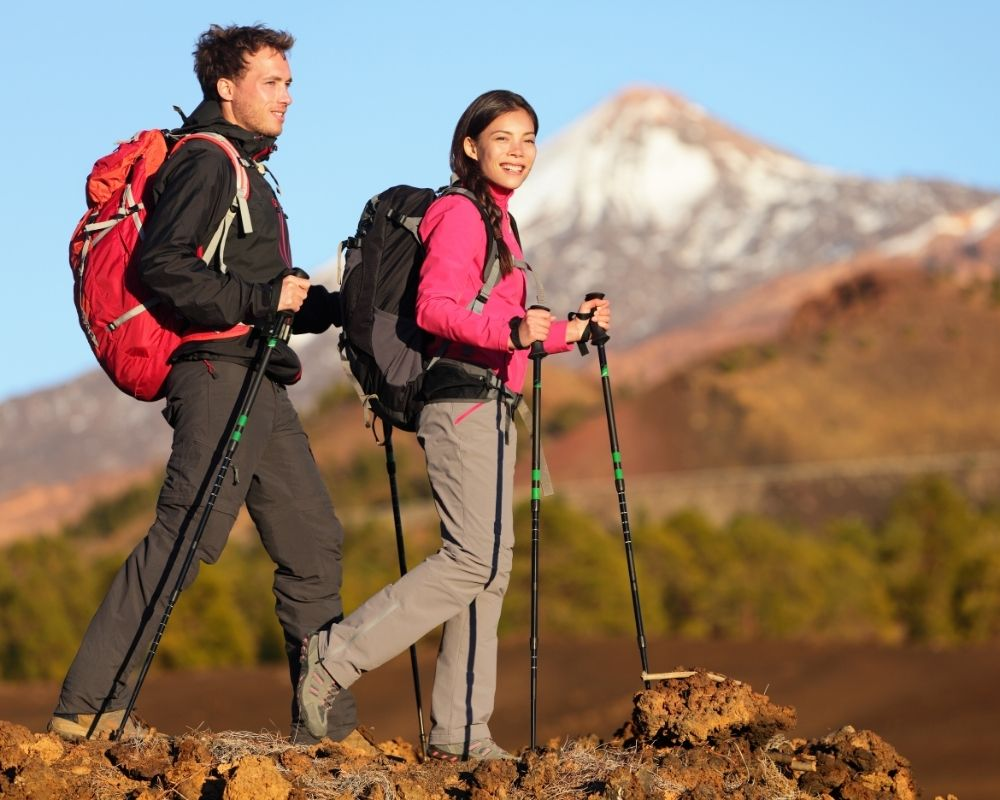
Weather Conditions
Now that we have discussed the importance of safety equipment, let’s move on to weather conditions. Weather is a crucial factor in successful trekking and can present some serious risks if not taken into consideration. Being prepared for all types of temperatures and conditions will help you enjoy your trek safely.
| Do | Don’t |
|---|---|
| Monitor forecasted temperatures and weather patterns before setting out on a trek | Venture out without checking the local weather report first |
| Bring appropriate clothing according to the season or current temperature trends | Underestimate what type of clothing is needed given climate changes over time/day |
| Carry multiple layers when going through higher altitudes as they tend to be colder than lower ground | Wear cotton clothes as it absorbs sweat and gets cold quickly in low temperatures |
| Pack extra food supplies just in case inclement weather delays your plans | Leave behind survival items such as water, flashlight, knife, etc. where possible |
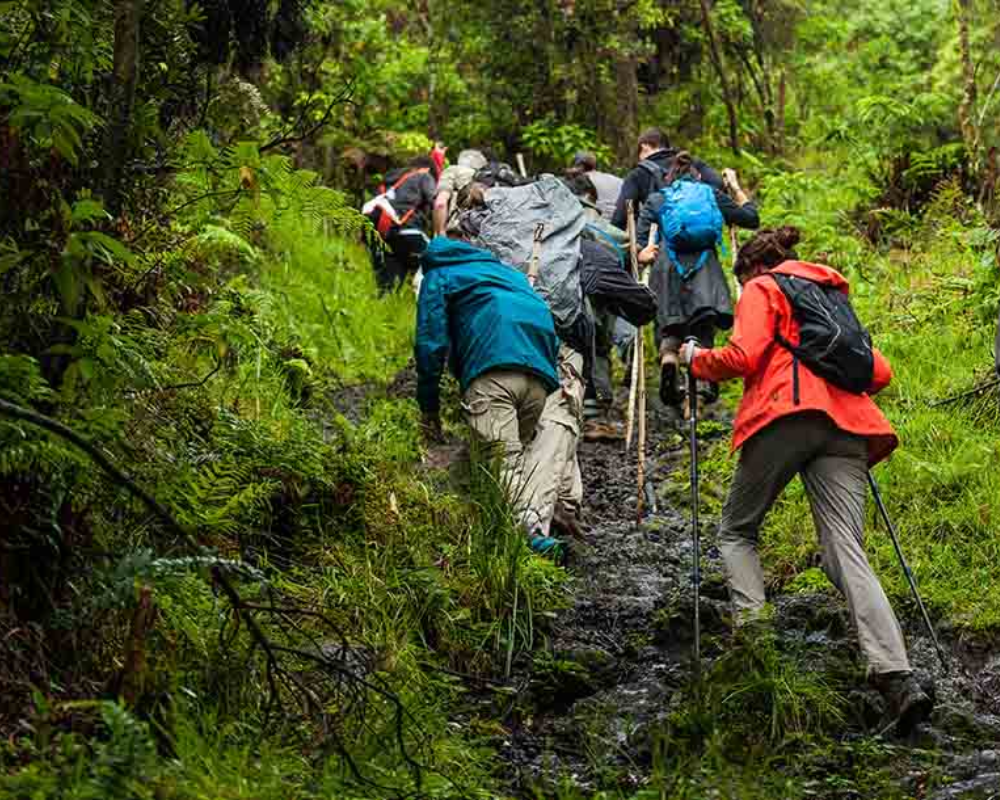
As an experienced trekker, I suggest taking certain precautions before embarking on any journey. Be sure to check the latest forecasts so you’re aware of possible storms or other hazardous events that may affect your trek; also take special note of high-altitude areas which are usually much colder than lower grounds. Additionally, wear several layers of warm clothing rather than one thick layer; this way you can add or remove articles depending on how hot or cold it is at different times throughout your trip. Finally, make sure you pack enough food supplies should unexpected bad weather delay your progress – after all, being caught unprepared during extreme weather could put you in danger! With these simple tips in mind, you’ll give yourself the best chance at having an enjoyable and safe adventure no matter what kind of weather comes your way! Now let’s move on to navigation strategies…
Mountaineering Dos And Don ts Navigation Strategies
Navigation is a key skill for any successful trekker. It requires an understanding of route planning, map reading, and terrain awareness to ensure that you stay on the right track. Here are some do’s and don’ts when it comes to navigation:
- DO use a detailed topographical map to plan your route before setting off.
- DON’T rely solely on trail markers; they can be unreliable or misleading in certain areas.
- DO take time to familiarise yourself with the landscape ahead of time and make note of landmarks along the way that could help guide you if needed.
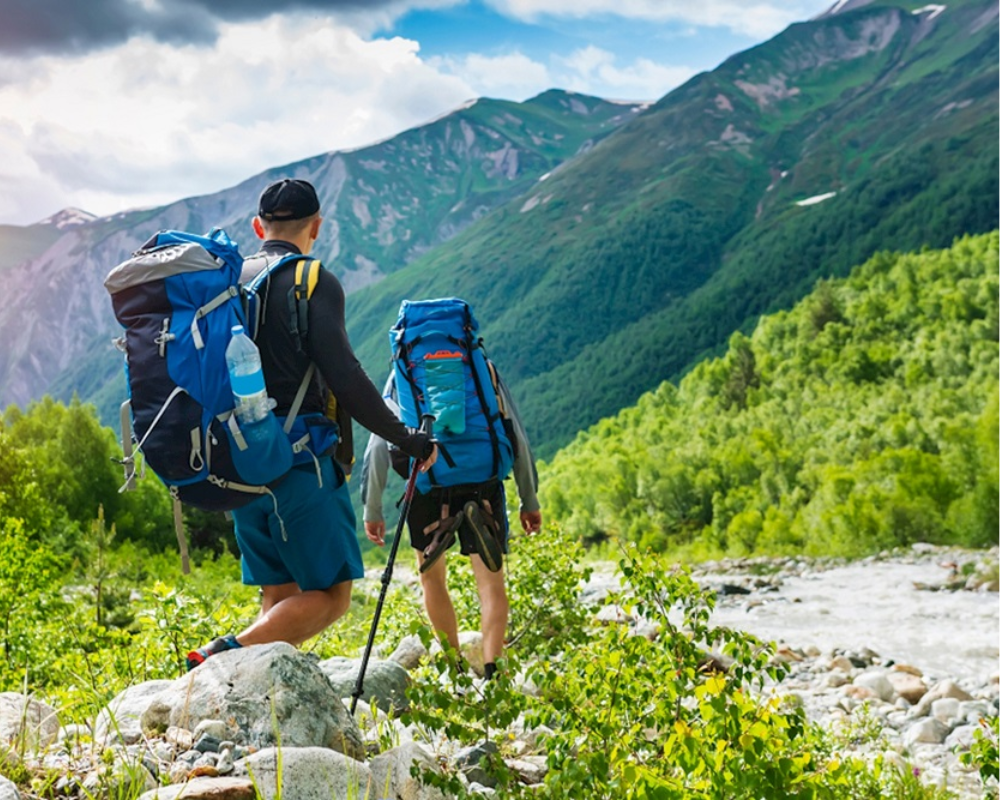
It’s also important to pay attention to changes in terrain and weather conditions as these could affect your plans. For example, during winter months, snow may cover trails making them difficult to follow so having alternate routes planned would come in handy in such situations. Being aware of potential hazards like falling rocks or loose soil can help prevent accidents from occurring too. With all this knowledge, you’ll be able to navigate confidently no matter where you’re going!
Sapa 1 Day Tours
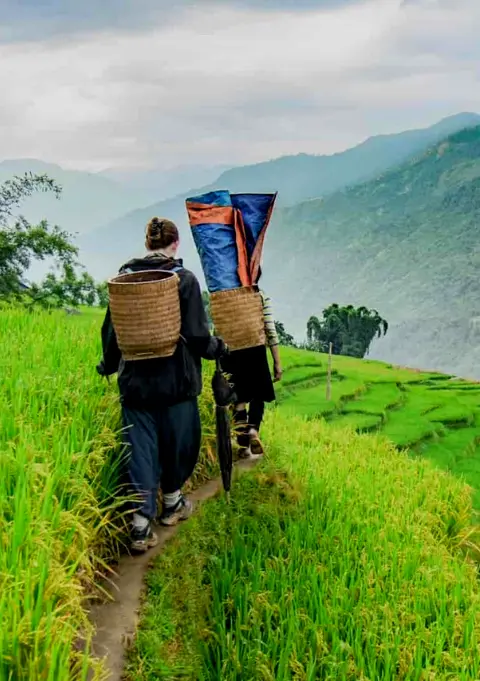
- 1 day experience
- Moderate to challenging
- Cultural immersion & active adventure
- Rice fields, valleys & villages
- Private tours
- Vegan-friendly
Sapa 2 Day Tours
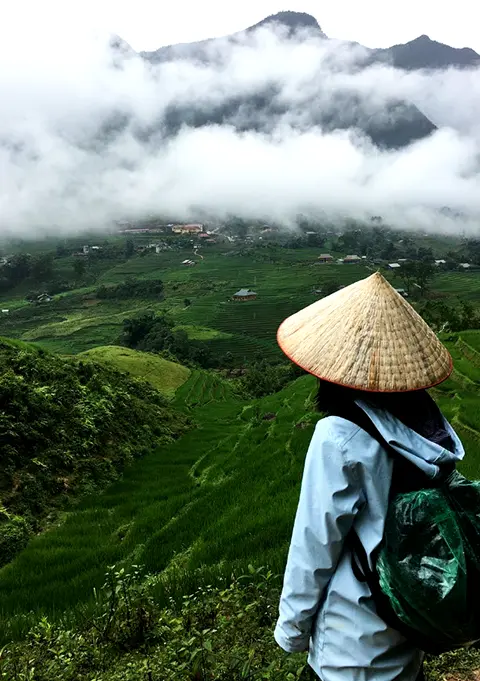
- 2 days 1 night experience
- Moderate to challenging
- Cultural immersion & active adventure
- Mountains, valleys, rice fields and villages
- Private tours
- Vegan-friendly
Sapa 3 Day Tours
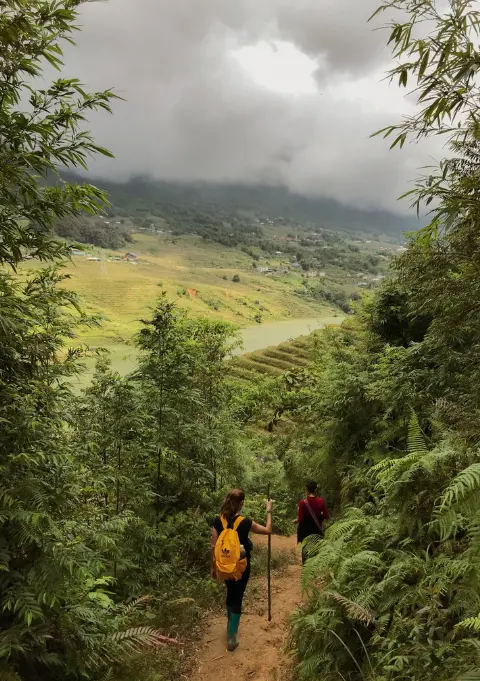
- 3 days 2 night experience
- Moderate to challenging
- Cultural immersion & active adventure
- Mountains, valley, rice fields & villages
- Private tours
- Vegan-friendly
Sapa 4 Day Tours
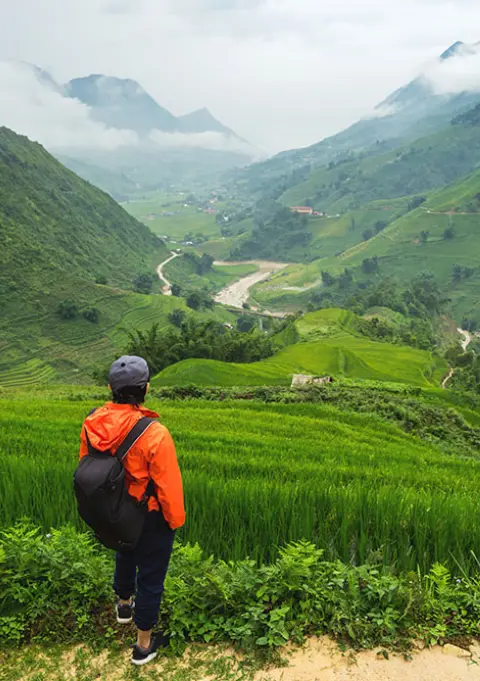
- 4 days 3 night experience
- Moderate to challenging
- Cultural immersion & active adventure
- Mountains, valleys, rice fields & villages
- Private tours – Less Touristic
- Vegan-friendly
Not Disturbing The Environment
No matter how prepared and experienced you are, trekking has certain do’s and don’ts that must be followed to protect the environment. As a trekker, it is important to remember these rules of thumb while on the trail:
| Do’s | Don’ts |
|---|---|
| Tread lightly – stay on existing trails and minimize foot contact with soil & vegetation | Leave no trace – avoid making new tracks or taking shortcuts down hillsides or near wetlands |
| Use biodegradable products like sunscreen, soap, etc. | Respect wildlife by keeping your distance from them and not feeding them food scraps |
| Avoid fires- never leave campfires unattended or create fire pits away from established campsites |

These guidelines will help ensure that our natural resources remain pristine for future generations of hikers. Taking responsibility for one’s actions can make all the difference when exploring nature; leaving an area better than when found should be every hiker’s goal! With this knowledge in mind, let us move on to the next topic: Wildlife Encounters.
Wildlife Encounters
When it comes to trekking, one of the most important things to remember is to be mindful of wildlife encounters. While these can be exciting and rewarding experiences, they can also present some hazards that are best avoided.
The first step in avoiding these potential dangers is observation. Whenever you come upon an area with a high concentration of wildlife, take time to observe the animals before making any movements or noises. Doing so will give you a better sense of what kind of behavior the animal might exhibit if startled or threatened by your presence. If there’s any indication that the creature could pose a risk, such as aggressive posturing or agitated movements, proceed cautiously until you have passed through safely.

If you do choose to engage with wildlife during your trekking experience, keep your distance and don’t attempt to touch them unless necessary for safety reasons. The key is keeping yourself out of harm’s way while still having an enjoyable encounter with nature’s creatures. Always remain aware of potential risks and use common sense when appraising situations involving wild animals.
By following these simple steps and taking caution around wildlife, you can successfully enjoy its beauty from afar without putting yourself in unnecessary danger along the way! Now let’s move on to discussing injuries and illnesses that may occur while trekking…
Sapa 1 Day Tours

- 1 day experience
- Moderate to challenging
- Cultural immersion & active adventure
- Rice fields, valleys & villages
- Private tours
- Vegan-friendly
Sapa 2 Day Tours

- 2 days 1 night experience
- Moderate to challenging
- Cultural immersion & active adventure
- Mountains, valleys, rice fields and villages
- Private tours
- Vegan-friendly
Sapa 3 Day Tours

- 3 days 2 night experience
- Moderate to challenging
- Cultural immersion & active adventure
- Mountains, valley, rice fields & villages
- Private tours
- Vegan-friendly
Sapa 4 Day Tours

- 4 days 3 night experience
- Moderate to challenging
- Cultural immersion & active adventure
- Mountains, valleys, rice fields & villages
- Private tours – Less Touristic
- Vegan-friendly
Injuries And Illnesses
When it comes to trekking, it’s essential to know the do’s and don’ts. For starters, always be prepared for any emergency that may arise on your hikes such as a sprained ankle or broken bone. It’s also important to take special precautions when at high altitudes since altitude sickness can occur in some cases. Remember to bring enough water to stay hydrated during your excursion and beware of heat exhaustion! Insect bites are also a common issue so make sure you have insect repellant handy.
Finally, no matter how experienced you might be with hiking, accidents can happen at any time – don’t let complacency become an issue. Trekkers should always backpack with basic first aid supplies like bandages and antiseptic wipes just in case something unexpected happens along the way. By following these guidelines, you’ll be well-prepared for any injuries or illnesses that may come up while out on the trail.
To better prepare yourself for potential emergencies, knowing what items should go into a first aid kit is key.

Emergency Situations
When trekking, emergencies are a real possibility. It’s important to be prepared for anything that may arise during your journey. Here are some of the do’s and don’ts when it comes to emergencies:
- Have an emergency communication plan: always have access to a satellite phone or other reliable form of contact in case you need assistance.
- Know basic first aid and medical care procedures: if you get injured on the trail, make sure you know what to do before seeking professional help.
- Plan for shelter options: bring supplies such as tents, blankets, etc., so if needed you can set up camp quickly.
- Learn how to use navigational tools like GPS devices and maps: this will help ensure that you stay on course even in unexpected circumstances.

It is also wise to learn some basic signaling techniques so that people nearby can hear any distress calls more easily. For example, bringing along a whistle or flashlight could come in handy in the event of an emergency while out on a hike. Additionally, learning navigation skills such as reading trail markers and landscapes will give you a better chance at finding safety should something go wrong during your trip.
No matter how experienced a hiker one might be, planning for potential emergencies is essential for safety on any outdoor excursion. By taking into account these tips regarding emergency communication, medical care, shelters, navigation devices, and signaling methods; hikers can rest assured they’re ready for whatever Mother Nature throws their way!
What Are The Do’s And Don’ts Of Trekking? Frequently Asked Questions
What Type Of Terrain Should I Expect To Encounter On A Trek?
Trekking is an adventure like no other. It can take you to some of the most rugged, remote, and unique terrains on our planet. From desert landscapes to snow-capped mountains, trekking will give you a truly unforgettable experience. But what type of terrain should you expect to encounter while on your journey?
When it comes to trekking, there are many different types of terrain that you may come across depending on where in the world you decide to go. While mountainous regions often provide lush green valleys with plenty of steep climbs for those who enjoy a challenge, deserts offer vast open spaces and big sandy dunes for those looking for something more off the beaten track. Wetter climates bring their own set of challenges such as slippery rocks or muddy trails but also provide stunning scenery along rivers and lakeside paths. Lastly, rocky terrains can be found all around the globe from grassy hillsides dotted with large boulders to craggy cliff faces providing both unparalleled views and thrilling climbing opportunities.
No matter which kind of environment you choose to explore, it’s important to remember that each brings its unique hazards so it’s wise to research any potential risks before setting out on your trek. Fortunately, experienced guides are available regardless of location who can help point out any safety precautions needed when crossing certain types of terrain. They can also provide invaluable knowledge about local customs, flora & fauna as well as help orientate yourself if ever lost!
So whatever type of environment suits your adventurous spirit best – whether it’s making your way through rugged mountain passes or taking a stroll through flat plains – make sure you do adequate planning beforehand and have fun exploring this wild world we call home!
How Often Should I Take Breaks During A Trek?
When it comes to trekking, taking regular breaks is an important part of the experience. It’s essential for both safety and enjoyment that you take frequent rests while on your journey. Knowing how often to take breaks during a trek depends on several factors such as terrain, difficulty level, weather conditions, and even your physical condition.
To get the most out of your trekking experience and stay safe at the same time, it’s best to plan by considering these factors before setting off. For instance, if you’re tackling steep or difficult terrain then you should aim to break more frequently than usual – resting every 45 minutes or so until you become accustomed to the terrain. In flatter or easier sections, however, a rest once an hour could be enough to keep going without becoming too worn down. Regardless of where you are though, make sure you always listen to your body when it needs a break!
The length of each rest period can also depend on various things such as temperature and humidity levels; if it’s hot outside then longer stops may be needed for your body to cool down properly. Additionally, if it’s been raining heavily then short pauses might suffice as long as they occur regularly throughout the day. Ultimately though, there’s no hard-and-fast rule – just remember that taking frequent and adequate rests is key for enjoying your trekking adventure safely and comfortably!
So whether you’re hiking up mountains or walking along paths through nature reserves; ensure that alongside packing all necessary items like food water and appropriate clothing – you also factor in sufficient rest periods into your itinerary accordingly. As any experienced hiker knows well: If not taken care of correctly now – exhaustion will come back later with a vengeance!
How Much Water Should I Bring For A Day-Long Trek?
When trekking, it’s important to be prepared with enough water for a day-long trek. Planning your water supply and consumption can help you stay hydrated throughout the journey. As an expert in trekking, here are some tips on how much water to bring for those longer treks:
Start by calculating the amount of water you will need based on the length of your hike, temperature, and level of exertion.
Bring at least one liter (or more) per person if it’s hot out and two liters if temperatures are cooler.
Consider bringing along sources of rehydration such as electrolyte tablets or sports drinks in case you get dehydrated during the hike.
If possible, try to plan so that you have access to fresh water sources along your route.
Don’t forget to also pack snacks or light meals which contain high amounts of water like fruits and vegetables!
Having sufficient supplies of clean drinking water is essential when taking part in any kind of outdoor activity but especially critical when embarking on a long trek. Make sure to take into account factors such as weather conditions, terrain difficulty, and time duration before setting off – this way, you’ll always have enough fuel to keep going until the end! Remember that these guidelines should not replace common sense; if you feel thirsty while hiking then makes sure to drink extra fluids regardless. With proper planning and preparation, there’s no reason why you won’t be able to enjoy every step of your adventure!
What Is The Best Way To Avoid Encounters With Dangerous Wildlife?
As a trekking expert, I’m often asked about the best way to avoid encounters with dangerous wildlife – and it’s an important topic! Any outdoor enthusiast can prevent danger from wild animals if they follow certain guidelines. In this article, let’s go over some of the key tips for avoiding dangerous wildlife when heading out into nature.
It all starts with being aware of your surroundings: pay attention to what types of animals have been spotted in the area you are visiting, as well as their behavior patterns. Avoiding areas that may be home to particularly aggressive species is also wise; these can include bears, wolves, or large cats like cougars. Additionally, make sure you carry bear repellent and other sprays specifically designed to deter wildlife while trekking.
Another great tip is making noise and staying visible while walking through heavily wooded areas. If animals know you’re there, they’ll likely stay away – but if they sense something amiss (like silence), then they may come closer to investigate. Wear brightly colored clothing so that you stand out against natural backgrounds – consider bringing along a whistle or bell too! Lastly, respect the space of any animal you encounter by keeping your distance; never approach them or try to feed them unless instructed by experienced guides who understand how to handle such situations safely.
By following these simple strategies on wildlife danger prevention, you can ensure a safe and enjoyable experience outdoors free from worry or fear of potentially dangerous encounters! So don’t hesitate to explore the wonders of nature armed with knowledge and preparedness – just remember that safety should always remain a top priority when enjoying time outdoors.
What Should I Do If I Become Lost While Trekking?
Getting lost while trekking can be a daunting experience. Being prepared is the best way to avoid becoming disoriented, but if you do find yourself off-track it’s important to know how to react. Trekking safety and navigation are essential elements of any successful journey into the wilderness, so learning how to respond when lost will help ensure your survival and get you back on track in no time.
The first step when you become lost is to remain calm. Panic often leads people astray, making them vulnerable to mistakes that could put their lives at risk. Taking a few deep breaths will enable you to think clearly and make decisions more effectively. Once composed, assess your situation by taking stock of where you last knew where you were and what direction was most likely home or shelter. This should give you some idea as to which way you need to go next.
When assessing directions for your return, look out for familiar landmarks such as trees, rocks, or bodies of water that may have been visible during your trekking preparation or on prior walks through the area. Additionally, consider the sun’s position about where it was earlier; this will provide an indication of north/south orientation and aid with navigation efforts. If all else fails, stay put until help arrives – having supplies handy from previous trekking preparations will come in useful here too!
Knowing basic trekking survival techniques like building shelters and starting fires can also prove invaluable in case of emergencies like being lost outdoors for an extended period. Ensure these skills are part of your repertoire before embarking on any hiking adventure into the unknown – knowledge is power on the trails!
Conclusion
As an avid trekker, I can tell you that there’s nothing more rewarding than completing a challenging hike. Trekking is an exciting and fulfilling experience, but it comes with certain risks as well. It’s important to be aware of the do’s and don’ts of trekking before embarking on your journey. Knowing what type of terrain to expect and how often to take breaks will help keep you safe while enjoying the outdoors. You should also bring plenty of water for a day-long trek – at least 2 liters per person – so that you stay hydrated throughout your adventure. To avoid dangerous wildlife encounters, make sure to talk loudly or sing as you move through trails to alert any nearby animals. If ever lost during a hike, remain calm and try to identify landmarks around you that could help guide your way back home.

Did you know that according to recent research by National Geographic Adventure Magazine, hiking has increased by 50% in the United States over the past 5 years? This surge in popularity illustrates just how much people are beginning to appreciate outdoor activities like trekking. Whether it’s exploring new areas or simply taking some time away from routine life – everyone should explore nature safely! With proper preparation and knowledge of the dos and don’ts, trekkers can enjoy their adventures knowing they have taken all necessary precautions for a successful journey!
Sapa 1 Day Tours

- 1 day experience
- Moderate to challenging
- Cultural immersion & active adventure
- Rice fields, valleys & villages
- Private tours
- Vegan-friendly
Sapa 2 Day Tours

- 2 days 1 night experience
- Moderate to challenging
- Cultural immersion & active adventure
- Mountains, valleys, rice fields and villages
- Private tours
- Vegan-friendly
Sapa 3 Day Tours

- 3 days 2 night experience
- Moderate to challenging
- Cultural immersion & active adventure
- Mountains, valley, rice fields & villages
- Private tours
- Vegan-friendly
Sapa 4 Day Tours

- 4 days 3 night experience
- Moderate to challenging
- Cultural immersion & active adventure
- Mountains, valleys, rice fields & villages
- Private tours – Less Touristic
- Vegan-friendly
